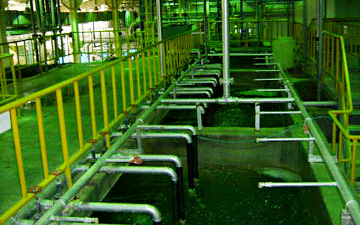Direct combustion method
Gas that contains malodor material is subjected to direct combustion with 600~800℃ flame to remove malodor and VOC. Contact time is about 0.3~0.5 seconds, and the performance does not decrease even when used for a long time. Moreover, pressure loss is low and there is almost no need to repair. It is used to remove malodor from smoked meat, purity fat, varnish heating up, 현액 drying and others.
Catalyst combustion method
This is the method for treatment gas that contains malodor material using catalysts such as platinum, 팔라티늄 or metallic oxide (Cr, Mn, Cu, Ni) after oxidizing malodor material at low temperature (about 250~450). This can reduce hundreds of temperature compared to the direct combustion method and to significantly reduce the area mass taken up by facility. However, gas that contains organic SILCONE compound, organic phosphorus, metallic compound, halogen compound, organic compound and others has catalytic poison, which destroys the catalyst. Thus, it should not be applied.
Regeneration Thermal Oxidzer(R.T.O)
This is the system that recuperates and regenerates heat by using two or three (2BED or 3BED) filled with CERAMIC heat transmission medium. Air current gets flown in when polluted GAS passes through the heated 1BED. Cold air current gets heated up since it passes through the hot filled layer and filled layer is cooled. At this time, heated up air gets discharged while warming up the filled layer while passing through 2BED, which is cold. While repeating this movement, gas and ceramic exchange heat with each other and there is virtually no operation cost (auxiliary heater) and 80~90% of the heat can be recovered.


